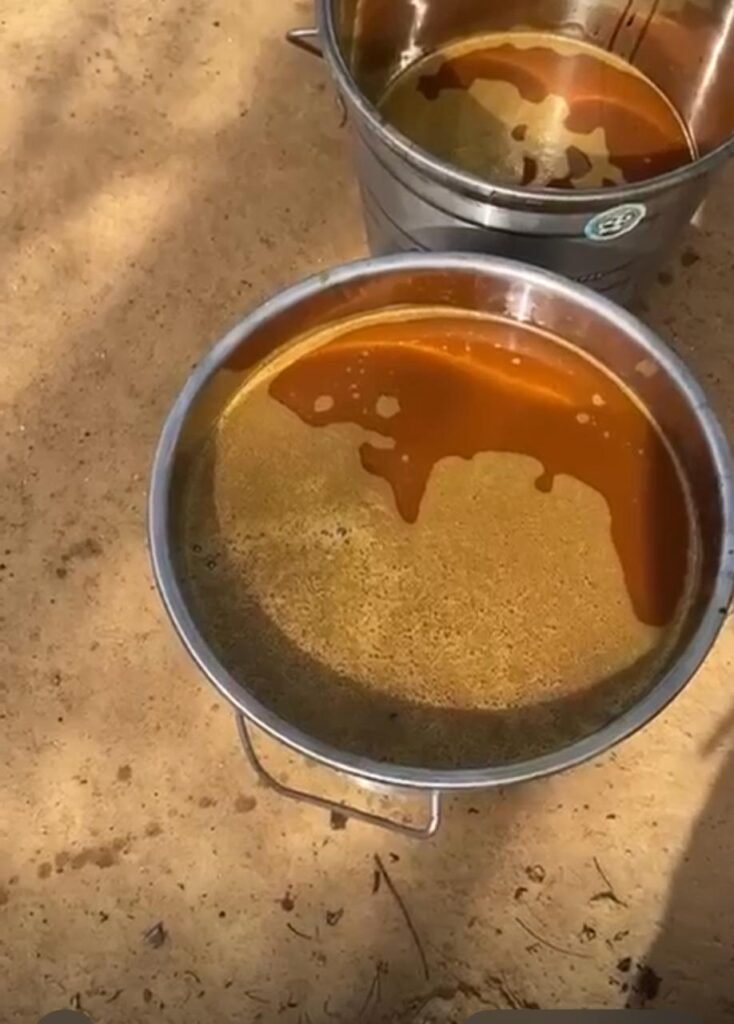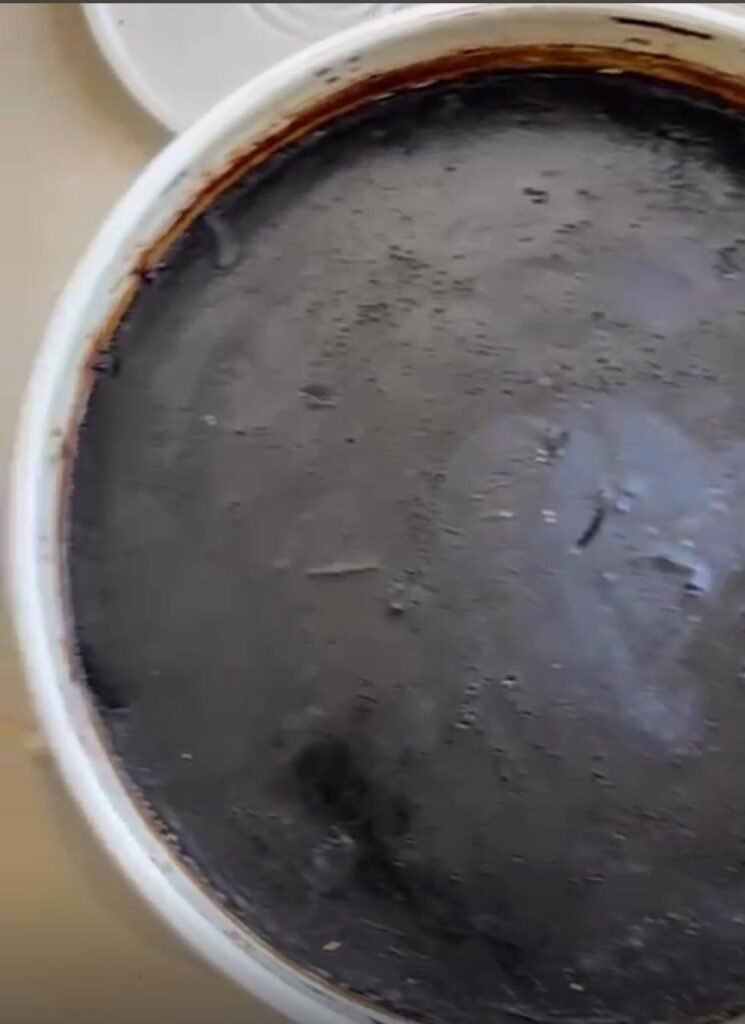Aloe yellow sap (latex) contains aloin and other anthraquinones, which are used in pharmaceuticals, research, and some industrial applications. Below is a detailed breakdown of how aloe latex is extracted and processed into a concentrated paste.
1. Extraction of Aloe Latex
A. Harvesting and Preparation
- Mature Aloe Leaves are selected (typically 3-5 years old for higher latex content).
- The leaves are washed to remove dirt and debris. When the job is directly done at the aloe plantations, the cut aloe plants are placed in a gutter-type mold and there they begin to exude their sap.
- When this job is done at the factory, the green rind is carefully sliced open to expose the inner leaf structure.
B. Collection of Yellow Sap (Latex)
- The yellowish-brown latex oozes out from the pericyclic tubules (located just beneath the rind).
- Methods to collect latex:
- Manual Scraping: The sap is scraped off with a knife or blade.
- Drip Collection: Leaves are hung vertically to let the latex drain into containers.
- Pressing: Some industrial methods use mechanical pressing to extract more latex.

2. Processing into Concentrated Paste
A. Filtration & Purification
- The raw latex is filtered to remove plant debris and impurities.
- Activated charcoal or clay filtration may be used to remove excess pigments.
B. Concentration (Evaporation & Drying)
Low-Heat Evaporation
- The liquid latex is gently heated (≤60°C / 140°F) to evaporate water, increasing concentration.
- This prevents degradation of active compounds like aloin.
Spray Drying (Industrial Method)
- The latex is spray-dried into a fine powder, which can later be reconstituted into paste.
Freeze Drying (For High-Purity Extracts)
- Used in pharmaceutical-grade processing to preserve potency.

C. Final Paste Formation
- The concentrated liquid is further thickened into a paste using:
- Natural evaporation (sun drying in controlled conditions).
- Addition of stabilizers (e.g., glycerin) for commercial products.
3. Industrial Refinement (Optional)
- Decolorization: If a lighter-colored paste is needed, additional filtration with activated carbon is used.
- Standardization: The aloin content is measured and adjusted for consistency (important for pharmaceutical use).
4. Uses of Concentrated Aloe Latex Paste
| Industry | Application | Notes |
|---|---|---|
| Pharmaceutical | Laxative formulations (regulated) | Requires strict purity controls |
| Cosmetic | Exfoliating agents, antifungal treatments | Used in minimal amounts |
| Agriculture | Natural pesticide, livestock digestion aid | Must be diluted properly |
| Bitter Beverages | As a bitter agent | Paste or concentrate used |

5. Safety & Regulatory Considerations
Within FDA Regulations, aloin is banned in oral supplements in the U.S. (2018 FDA ruling), but allowed in topical cosmetics but restricted in concentration. Usually the limit is 10 PPM.
In the particular case of the European Union, the EU has established a maximum level of 1 ppm (part per million) for certain hydroxyanthracene derivatives (HADs), including aloe-emodin, emodin, and the sum of aloin A and aloin B, in aloe vera preparations used in food and food supplements. This regulation, specifically Regulation (EU) 2021/468, aimed to ensure food safety by limiting the presence of these potentially harmful substances.
These HADs are naturally occurring compounds found in aloe vera, particularly in the outer layers of the leaf. This Regulation (EU) 2021/468, which came into effect on April 8, 2021, prohibited the use of aloe preparations containing HADs in food and food supplements. The regulation mentioned that some HADs, like aloe-emodin and aloin, have been associated with potential health risks, including laxative effects and potential carcinogenic properties.
For the purpose of implementing the prohibition, the EU considered aloe preparations to “contain” HADs when the total aloin (A + B) present is > 1 ppm. This is also the lowest level that can be reliably quantified in laboratories.
However, the Regulation (EU) 2021/468, which restricted certain plant-based food and food supplements containing hydroxyanthracene derivatives (HADs), has been partially annulled by the European Court of Justice (ECJ).
The ECJ’s decision, specifically in case T-274/21, invalidated key sections of the regulation, impacting restrictions on aloe-emodin, emodin, and preparations from Aloe species leaves containing HADs.
The ECJ found that the European Commission’s interpretation of Article 8 of Regulation No 1925/2006, which was the basis for the restrictions, was inappropriate when applied to herbal “preparations”.
In essence, while the regulation (EU) 2021/468 set a 1 ppm limit for aloin in aloe preparations, that regulation has been annulled by the European Court of Justice, and those restrictions are no longer in place.
Conclusion
Aloe latex is extracted by collecting the yellow sap from the leaf’s outer layers, then processed into a concentrated paste through filtration, evaporation, and drying.
For more information please visit the concentrated aloe yellow sap specific page.
